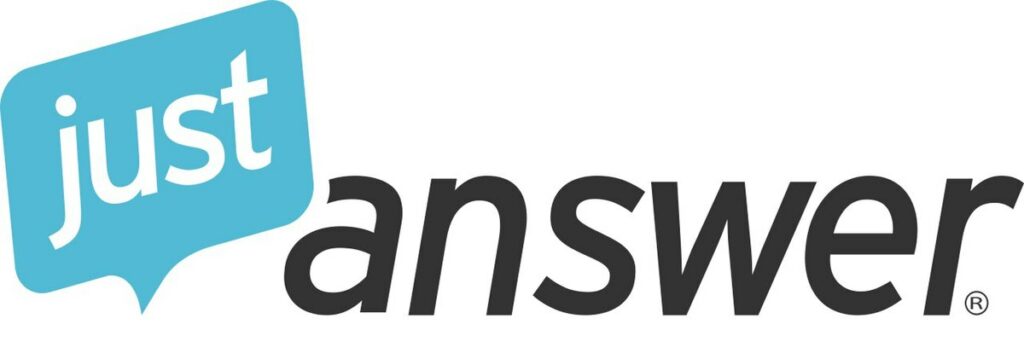Introduction
Have you ever been injured due to someone else’s negligence or intentional actions? If so, you may have grounds for a personal injury lawsuit. But don’t worry if you’re new to the legal system – we’ve got you covered! In this comprehensive guide, we’ll take you through the ins and outs of personal injury lawsuits, from filing a claim to winning your case. So buckle up and get ready to learn everything you need to know about personal injury lawsuit basics!
What is a Personal Injury Lawsuit?
A personal injury lawsuit is a legal claim filed by an individual who has suffered harm as a result of someone else’s negligence or intentional actions. Personal injury lawsuits can arise from a wide variety of situations, including car accidents, slip and falls, defective products, medical malpractice, workplace accidents, and more.
When filing a personal injury lawsuit, the plaintiff (the injured party) must prove that the defendant (the person or entity responsible for the injury) acted negligently or intentionally and that this action was the direct cause of the plaintiff’s injury. Negligence is often established by demonstrating that the defendant had a duty of care to the plaintiff, that this duty was breached, and that the breach caused the plaintiff’s injury.
In a personal injury lawsuit, the plaintiff may be entitled to various types of damages, including compensatory damages for economic and non-economic losses, such as medical expenses, lost wages, and pain and suffering, as well as punitive damages designed to punish the defendant for their actions. The amount of damages awarded depends on the severity of the injury, the impact on the plaintiff’s life, and other factors.
Here’s a practical example: John is driving his car when he is rear-ended by another driver, causing him to sustain a back injury. The other driver was texting while driving, which is a form of negligence. John hires a personal injury lawyer and files a lawsuit against the other driver for his injuries. After a long legal process that includes discovery and mediation, the case goes to trial, where a jury finds the other driver at fault and awards John compensatory damages for his medical expenses, lost wages, and pain and suffering.
Understanding the Elements of a Personal Injury Claim
In a personal injury claim, several key elements must be established to prove liability and seek compensation for damages. These elements serve as the foundation of the lawsuit and are crucial to the success of your case. Let’s explore each element in detail.
Duty of Care
The duty of care is a legal obligation that individuals or entities owe to others to exercise reasonable care and caution to prevent harm. For example, drivers have a duty to follow traffic laws and operate their vehicles responsibly. Doctors have a duty to provide competent medical treatment. Property owners have a duty to maintain their premises in a safe condition for visitors.
To establish a duty of care, it is essential to demonstrate that the defendant owed you a duty to act in a certain way and prevent harm. The specific duty of care will vary depending on the circumstances of your case. Identifying the responsible party and determining the extent of their duty is a crucial step in pursuing a personal injury claim.
Breach of Duty
Once the duty of care is established, the next element to prove is a breach of that duty. A breach occurs when the defendant fails to fulfill their duty of care, either through negligence, recklessness, or intentional wrongdoing. In other words, they did not act in a manner that a reasonable person or entity would have under similar circumstances.
To establish a breach of duty, you must show that the defendant’s actions or lack of action fell below the expected standard of care. This often involves presenting evidence, such as witness testimonies, expert opinions, or documented violations of regulations or protocols. An experienced personal injury attorney can help gather the necessary evidence and build a strong case to prove a breach of duty.
Causation
Causation is a crucial element in a personal injury claim, as it links the defendant’s breach of duty to the resulting injuries. There are two types of causation to establish:
Actual Cause: Also known as “cause-in-fact,” actual cause refers to proving that the defendant’s actions or negligence directly caused your injury. In other words, if it weren’t for the defendant’s breach of duty, you would not have suffered harm. Establishing actual cause often requires presenting evidence, such as medical records or expert opinions, that clearly demonstrates the connection between the defendant’s actions and your injuries.
Proximate Cause: Proximate cause, also referred to as “legal cause,” focuses on whether the defendant’s actions were the primary cause of your injuries or whether there were other intervening factors. It involves analyzing whether the injuries were a reasonably foreseeable consequence of the defendant’s breach of duty. Proximate cause can sometimes be more complex to establish, as it requires demonstrating that the defendant’s actions were a substantial factor in causing the harm.
Both types of causation are essential to proving liability in a personal injury claim. Your attorney will work closely with you to gather the necessary evidence and present a strong argument connecting the defendant’s actions to your injuries.
Damages
The final element of a personal injury claim involves demonstrating the damages you have suffered as a result of the defendant’s actions. Damages can encompass various losses and expenses, including:
- Medical bills and expenses: This includes costs related to hospital stays, surgeries, medications, rehabilitation, therapy, and ongoing medical care.
- Lost wages: If your injuries have caused you to miss work or have impacted your ability to earn income, you may be entitled to compensation for lost wages and diminished earning capacity.
- Pain and suffering: Physical pain, emotional distress, and psychological trauma resulting from the injury may also be considered in calculating damages.
- Property damage: If your personal property was damaged in the incident, such as a vehicle in a car accident, you may be entitled to compensation for repairs or replacement.
It’s important to accurately calculate and document your damages to ensure you seek fair and appropriate compensation. Consulting with a personal injury attorney can help you understand the types of damages available in your case and how they are calculated.
Types of Damages In a Personal Injury Case
- Compensatory Damages: Compensatory damages are intended to compensate the injured party for their losses resulting from the injury. These damages are awarded to reimburse the plaintiff for any expenses or losses they incurred as a result of the injury, including medical expenses, lost wages, and property damage.
For example, if someone is injured in a car accident and requires medical treatment, they may be entitled to compensatory damages to cover the cost of medical bills, rehabilitation, and any necessary follow-up care. Similarly, if the injured party is unable to work due to their injuries, they may be entitled to compensation for lost wages.
- Punitive Damages: Punitive damages are designed to punish the defendant for their actions and deter them and others from engaging in similar conduct in the future. These damages are typically awarded in cases where the defendant’s actions were particularly egregious or intentional, and are not intended to compensate the plaintiff for any specific losses.
For example, if a company knowingly sold a defective product that caused harm to consumers, they may be liable for punitive damages in addition to compensatory damages. The purpose of these damages is to send a message that such conduct will not be tolerated.
- Nominal Damages: Nominal damages are awarded in cases where the plaintiff has suffered harm, but the harm is minimal and does not warrant significant compensation. These damages are often awarded in cases where the plaintiff’s rights were violated, but no actual harm was suffered.
For example, if someone’s property was damaged, but the cost of repairs was minimal, they may be entitled to nominal damages to acknowledge the violation of their rights.
- Future Damages: Future damages are awarded to compensate the plaintiff for losses that they are likely to incur in the future as a result of the injury. These damages are typically awarded in cases where the plaintiff is expected to require ongoing medical treatment or will be unable to work in the future due to their injuries.
For example, if someone suffers a permanent disability as a result of an injury, they may be entitled to future damages to cover the cost of ongoing medical care, as well as compensation for lost future earnings.
Steps Involved in Filing a Personal Injury Lawsuit
Filing a personal injury lawsuit requires careful planning, diligent preparation, and adherence to specific steps within the legal process. Understanding these steps is crucial to ensure that you have the necessary information and resources to pursue your claim effectively. Let’s explore the key steps involved in filing a personal injury lawsuit.
Consultation with an Attorney
Seeking legal advice from an experienced personal injury attorney is essential when considering filing a lawsuit. An attorney specializing in personal injury law can provide invaluable guidance, assess the strength of your case, and help determine the best course of action. During the initial consultation, you should be prepared to provide details about the incident, injuries sustained, and any evidence you may have. This consultation will help you understand the viability of your claim and the potential legal options available to you.
Choosing the right attorney is crucial. Look for a lawyer with experience in personal injury cases, a track record of success, and strong communication skills. Additionally, consider their approach to handling cases, their availability to address your concerns, and their willingness to fight for your rights.
Investigation and Evidence Gathering
Building a strong case requires thorough investigation and gathering of evidence to support your claim. This step involves collecting medical records, accident reports, photographs of the scene, and any other relevant documentation. It may also include obtaining witness statements, consulting with experts, and conducting interviews to establish liability and damages.
Working closely with your attorney, you can identify the key pieces of evidence necessary to demonstrate the defendant’s breach of duty and the extent of your injuries. The more comprehensive and compelling your evidence, the stronger your case will be.
Filing the Complaint and Serving the Defendant
Once you have gathered the necessary evidence, the next step is to file a formal complaint with the appropriate court. The complaint outlines the legal basis for your claim, the injuries sustained, and the damages sought. It is crucial to ensure that the complaint is accurate, complete, and filed within the applicable statute of limitations.
After filing the complaint, it must be served to the defendant. Proper service ensures that the defendant is officially notified of the lawsuit and has an opportunity to respond. Serving the defendant can be done through various methods, including personal delivery, certified mail, or hiring a professional process server.
Discovery Phase
The discovery phase is a critical stage in a personal injury lawsuit. During this phase, both parties exchange information and evidence relevant to the case. Discovery methods include interrogatories (written questions), depositions (oral testimony under oath), requests for production of documents, and requests for admissions.
The purpose of discovery is to uncover all relevant facts, identify potential witnesses, and assess the strength of each party’s case. Your attorney will guide you through the discovery process, help you respond to discovery requests, and gather evidence to support your claim.
It’s important to note that the length and complexity of the discovery phase can vary depending on the specific circumstances of your case. Your attorney will work with you to ensure that all relevant information is obtained to support your claim.
As you progress through these steps, it’s crucial to maintain open and transparent communication with your attorney. They will guide you through each stage, provide legal advice, and help you make informed decisions about your case.
Settlement Negotiations and Trial Preparation
In a personal injury lawsuit, there are two potential paths to resolving the case: settlement negotiations or proceeding to trial. Understanding the dynamics of settlement negotiations and being prepared for trial are essential aspects of pursuing a personal injury claim. Let’s explore these two options in detail.
Preparing for Settlement Negotiations
Settlement negotiations are a common and often preferred method of resolving personal injury cases. In this process, the parties involved, including the plaintiff, defendant, and their respective attorneys, attempt to reach a mutually agreeable settlement without going to trial.
To effectively prepare for settlement negotiations, it is crucial to have a comprehensive understanding of your case’s strengths and weaknesses. This involves gathering and organizing all relevant evidence, such as medical records, expert opinions, witness statements, and any other documentation that supports your claim. Thoroughly assessing the value of your claim based on the damages you have incurred is also essential.
It is important to approach settlement negotiations with a clear strategy. Your attorney will play a pivotal role in advocating for your rights and negotiating on your behalf. They will communicate with the opposing party or their insurance company to present your case and negotiate a fair and reasonable settlement amount.
During negotiations, it is common for both parties to engage in back-and-forth discussions, presenting counteroffers and considering different settlement terms. It is crucial to remain patient and open to potential compromises while always keeping your best interests in mind. Your attorney will guide you through the negotiation process, providing legal advice and helping you make informed decisions.
Negotiating with Insurance Companies
In many personal injury cases, the defendant’s insurance company plays a significant role in the settlement negotiation process. Insurance adjusters are trained negotiators who aim to protect the interests of their company by minimizing the amount of compensation they pay out.
When negotiating with insurance companies, it is important to be aware of their tactics and strategies. They may attempt to downplay the severity of your injuries, question liability, or offer low settlement amounts in hopes that you will accept a quick resolution. It is crucial to remain vigilant and not settle for less than what you believe is fair.
Effective communication with insurance adjusters is key. It is important to provide accurate and comprehensive information about your injuries, medical treatment, and the impact they have had on your life. Keep a record of all communications and document any offers or proposed settlement amounts.
Your attorney will serve as your advocate during negotiations with insurance companies. They will handle communications, negotiate on your behalf, and work to ensure that your rights are protected. Their experience in dealing with insurance companies can be invaluable in securing a fair settlement.
Mediation and Alternative Dispute Resolution
If settlement negotiations fail to produce a satisfactory outcome, alternative dispute resolution methods such as mediation may be pursued. Mediation involves a neutral third party, the mediator, who facilitates discussions between the parties to help them reach a settlement agreement.
Mediation can be an effective alternative to trial, as it allows for more control over the outcome and can potentially save time and money. The mediator helps to identify areas of agreement, facilitates communication, and assists in finding common ground between the parties.
Other forms of alternative dispute resolution, such as arbitration or neutral evaluation, may also be considered. These methods involve presenting the case to a neutral third party who will make a binding decision or provide an evaluation of the case.
It is important to discuss these alternative options with your attorney to determine whether they are suitable for your case. They can provide guidance on the pros and cons of each method and help you make an informed decision.
Trial Preparation
If settlement negotiations and alternative dispute resolution methods are unsuccessful, the case may proceed to trial. Trial preparation is a crucial phase where your attorney will work diligently to build a strong case and present your evidence before a judge or jury.
During trial preparation, your attorney will select a jury, gather and organize exhibits, prepare witnesses, and develop a trial strategy. They will thoroughly review the evidence, research applicable laws, and prepare arguments to present your case persuasively.
Additionally, your attorney will anticipate the opposing party’s arguments and evidence, allowing them to effectively counter those claims and protect your interests. They will also prepare you for testifying, ensuring that you are confident and comfortable in presenting your side of the story.
Trial preparation requires attention to detail, thorough research, and effective organization. Your attorney’s experience and expertise in trial advocacy will be crucial in presenting your case convincingly and maximizing your chances of a favorable outcome.
By being prepared for settlement negotiations and trial, you will have a comprehensive approach to pursuing your personal injury claim. Whether your case is resolved through settlement or proceeds to trial, having a skilled attorney by your side will ensure that your rights are protected and that you have the best possible chance of obtaining the compensation you deserve.
The Statute of Limitations
The statute of limitations is the time limit in which a plaintiff must file a lawsuit. The period of time dictated by the statute of limitations begins when the plaintiff is injured or discovers the injury. Statutes of limitations vary by state and type of injury, and it’s important to have a professional personal injury attorney to guide you through the process.
The Laws Governing Personal Injury Cases
The laws governing personal injury cases are primarily developed through court decisions and legal treatises written by legal scholars. Legal elements that govern personal injury cases include the legal duty a defendant potentially owes to a plaintiff, the breach of that legal duty, a causation between the breach and the plaintiff’s injuries, and the resulting damages suffered by the plaintiff.
The Settlement Process
When you file a personal injury lawsuit, one of the potential outcomes is a settlement. A settlement is an agreement between you and the defendant (or their insurance company) to resolve the case without going to trial. The settlement process typically involves the following steps:
Demand letter: Your personal injury lawyer will prepare a demand letter outlining the details of your case and the amount of compensation you are seeking. This letter is sent to the defendant or their insurance company, who then has a certain amount of time to respond.
Negotiation: Once the defendant receives the demand letter, negotiations begin. Your lawyer and the defendant’s representative will negotiate back and forth until an agreement is reached. This may involve multiple rounds of negotiations and counteroffers.
Mediation: If negotiations are unsuccessful, the case may proceed to mediation. Mediation is a process where a neutral third party mediator helps the parties reach a settlement agreement. The mediator will hear both sides of the case and work to facilitate a resolution that is acceptable to both parties.
Settlement agreement: If a settlement is reached, the terms of the agreement will be outlined in a settlement agreement. This agreement will typically include the amount of compensation to be paid and any other conditions or stipulations.
Release of claims: Once the settlement agreement is signed, you will be required to sign a release of claims. This document releases the defendant from any further liability related to your injury and confirms that you will not pursue any further legal action related to the case.
Conclusion
Personal injury lawsuits can be complex and require a detailed understanding of the facts, the processes, and the law. If you or a loved one have been involved in an accident and are considering taking legal action, it’s important to seek professional help from a personal injury attorney. They can help you navigate the legal process and ensure that your rights are protected.
This blog post is part of the Legal Framework in the US series. For an entire overview of the legal Framework in the US, please visit our main blog post here.
FAQs
Q: How long do I have to file a personal injury lawsuit?
A: The amount of time you have to file a personal injury lawsuit varies depending on the state and the type of claim. This is known as the statute of limitations. It’s important to consult with a personal injury lawyer as soon as possible after your injury to ensure that you don’t miss any important deadlines.
Q: What if the person who caused my injury doesn’t have insurance?
A: If the person who caused your injury doesn’t have insurance, you may still be able to recover damages through other means, such as their personal assets or through your own insurance policy. A personal injury lawyer can help you explore your options.
Q: Do I have to go to court to settle my personal injury lawsuit?
A: Not necessarily. Many personal injury lawsuits are settled out of court through mediation or negotiations between the parties. However, if a settlement cannot be reached, the case may go to trial.
Q: Can I still file a personal injury lawsuit if I was partially at fault for the accident?
A: Yes, you may still be able to file a personal injury lawsuit if you were partially at fault for the accident. This is known as comparative negligence, and your damages award will be reduced based on your percentage of fault.
Q: How much compensation can I expect to receive from a personal injury lawsuit?
A: The amount of compensation you can expect to receive from a personal injury lawsuit depends on a variety of factors, including the severity of your injuries, the impact on your life, and the liability of the defendant. A personal injury lawyer can help you evaluate your case and estimate the potential damages.
More reading on the subject:
| Basics to the injury law |
| Hiring a Personal Injury Lawyer: What You Need to Know |
| Navigating Car Accidents: Crucial first steps after a car accident |
References:
American Bar Association (ABA) – https://www.americanbar.org/
NOLO – https://www.nolo.com/l
FindLaw – https://injury.findlaw.com/










